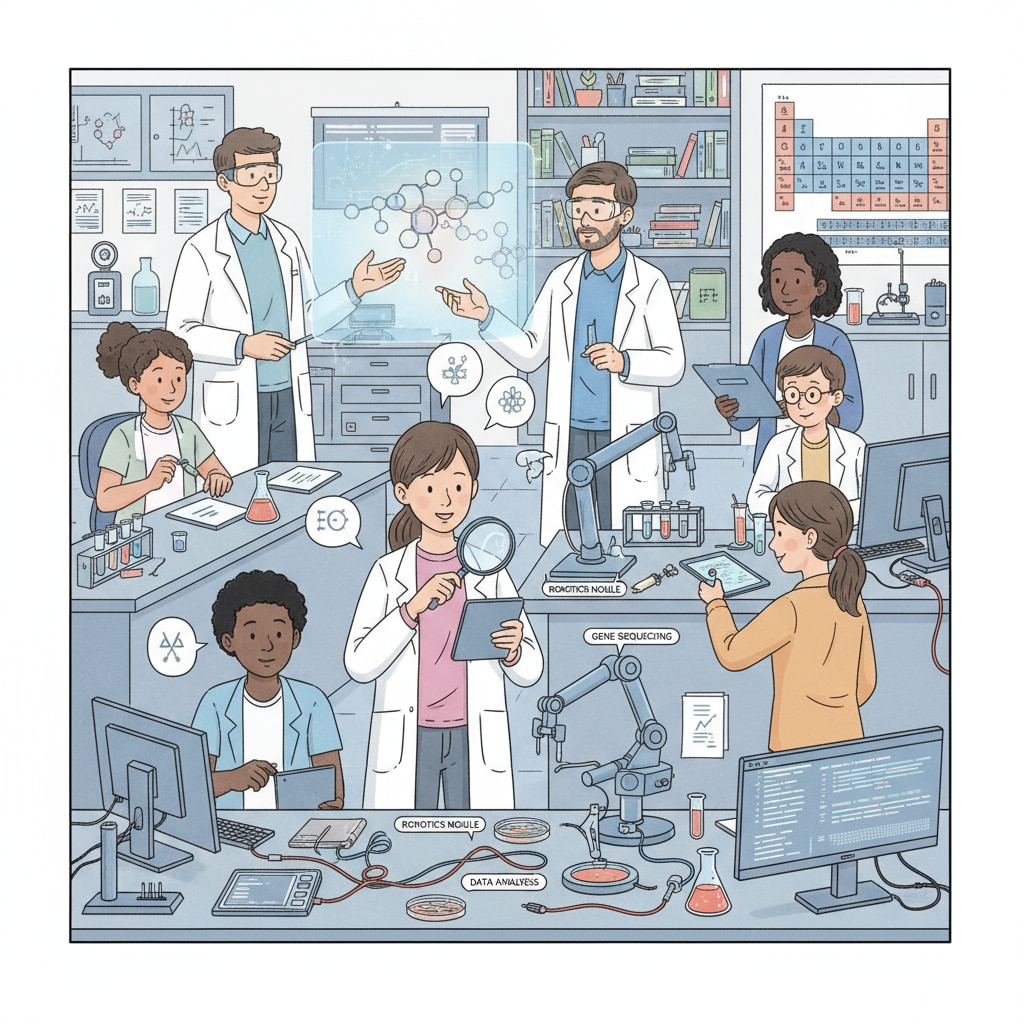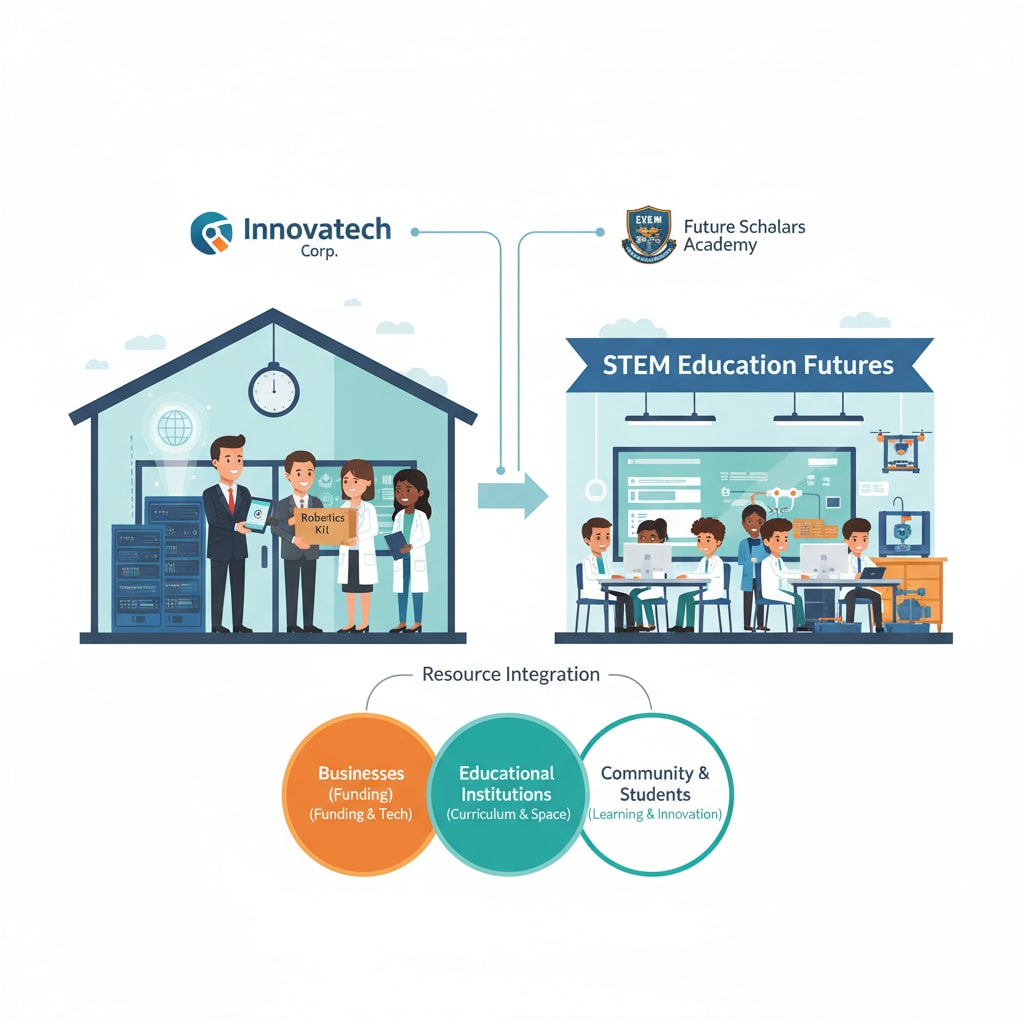STEM education, partnerships, and educational resources play a crucial role in shaping the future of education. In today’s rapidly evolving world, the need for innovative and collaborative approaches in STEM education has become more pressing than ever. This article delves into the effective cooperation models and presents inspiring success stories of STEM education partnerships.
The Significance of STEM Education Partnerships
STEM education, which encompasses science, technology, engineering, and mathematics, equips students with essential skills for the 21st century. Partnerships in this field bring together diverse stakeholders, including schools, businesses, and community organizations. By combining their unique resources and expertise, these partnerships can create a more comprehensive and engaging learning environment for students. For example, businesses can provide real-world insights, internships, and access to cutting-edge technologies, while community organizations can offer hands-on learning opportunities and mentorship programs. STEM education on Wikipedia

Resource Integration: The Foundation of Successful Partnerships
One of the key aspects of effective STEM education partnerships is resource integration. Schools often lack the necessary funds and facilities to keep up with the latest technological advancements. Businesses and community organizations can bridge this gap by providing financial support, equipment, and educational materials. Additionally, they can share their human resources, such as scientists, engineers, and technicians, who can serve as guest speakers or mentors. This exchange of resources not only enhances the quality of education but also exposes students to different perspectives and career paths. STEM education on Britannica

Another important aspect of resource integration is the sharing of data and research findings. By collaborating, partners can access valuable information that can inform curriculum development and teaching strategies. This collaborative approach ensures that students are learning the most relevant and up-to-date content.
Curriculum Co-construction: Tailoring Education to Real-World Needs
Curriculum co-construction is a vital element in STEM education partnerships. Together, schools, businesses, and community organizations can design curricula that are not only academically rigorous but also relevant to the real world. This involves aligning the curriculum with industry standards and incorporating real-world case studies and projects. For instance, a technology company might work with a school to develop a coding curriculum that reflects the latest programming languages and industry practices. This way, students gain practical skills that are directly applicable to future careers.
Furthermore, curriculum co-construction allows for the integration of different disciplines. STEM education is not just about isolated subjects but about how they intersect and work together. By creating interdisciplinary curricula, students can develop a holistic understanding of complex problems and learn to apply their knowledge across different fields.
Practical Project Collaboration: Bridging Theory and Practice
Practical project collaboration is where the magic of STEM education partnerships truly happens. Through hands-on projects, students get to apply the theoretical knowledge they have learned in the classroom to real-world situations. For example, a group of students might collaborate with a local environmental organization to develop a solution for reducing pollution in their community. This type of project not only enhances their problem-solving skills but also instills a sense of social responsibility.
Businesses can also play a significant role in practical project collaboration. They can provide internships, research opportunities, and access to their facilities. This gives students a taste of the professional world and helps them make informed career choices. Moreover, it allows businesses to identify and nurture future talent.
Key Strategies for Sustainable Partnerships
To ensure the long-term success of STEM education partnerships, several key strategies need to be implemented. First and foremost, clear communication and mutual understanding among partners are essential. Everyone involved should have a shared vision and goals for the partnership. Regular meetings and open dialogue can help address any issues or concerns that arise.
Another important strategy is the establishment of a governance structure. This includes defining the roles and responsibilities of each partner, setting up decision-making processes, and ensuring accountability. A well-defined governance structure helps maintain the stability and effectiveness of the partnership.
In addition, continuous evaluation and improvement are crucial. Partners should regularly assess the impact of the partnership on student learning, teacher professional development, and community engagement. Based on the evaluation results, adjustments can be made to enhance the quality and effectiveness of the partnership.
Readability guidance: The article has used short paragraphs and lists to summarize key points. Each H2 section provides a clear focus. The proportion of passive voice and long sentences has been controlled, and transition words have been scattered throughout the text to enhance readability.


